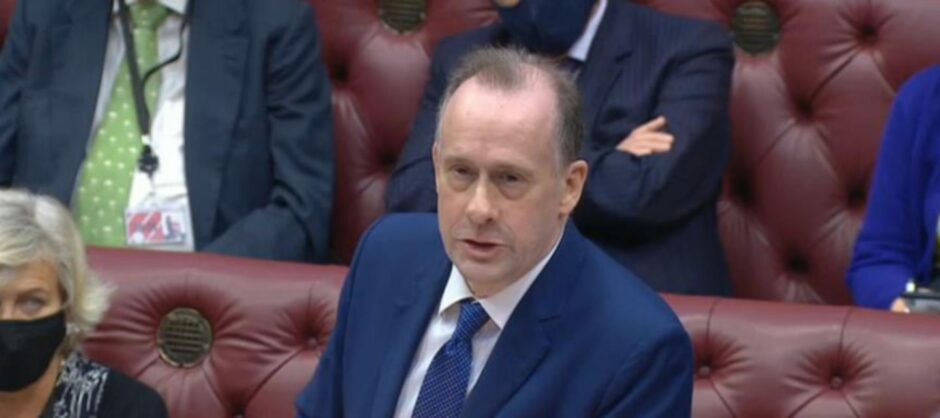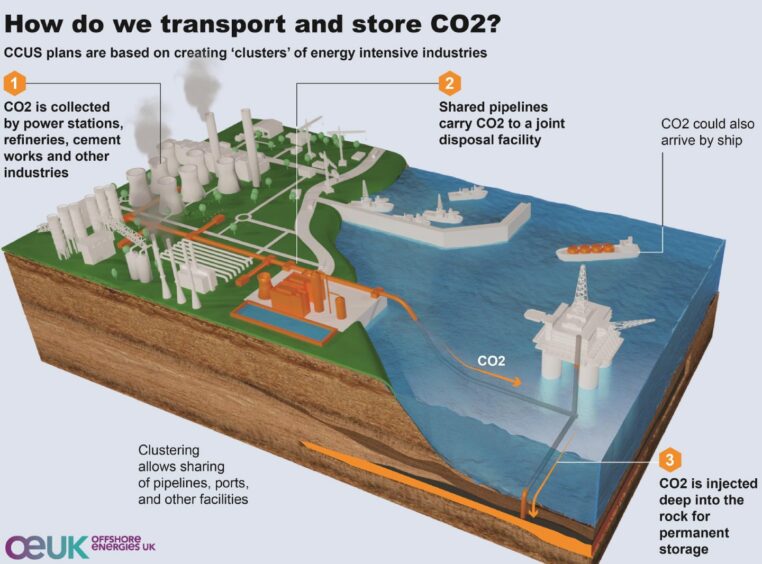Twelve companies have secured a total of 20 licences as part of the UK’s first-ever carbon storage licensing round.
It paves the way for the development of several carbon capture and storage (CCS) clusters.
A total of 13 areas were offered off the coast of Aberdeen, Teesside, Liverpool and Lincolnshire in the southern North Sea, central North Sea, northern North Sea, and East Irish Sea as part of the process, which kicked off last summer.
Overseen by the North Sea Transition Authority (NSTA) the new licences cover more than 4,600 square miles of offshore acreage – an area slightly larger than Yorkshire.
Successful bidders yet to be named
NSTA said the names of successful applicants will not be formally disclosed until they had accepted their awards – a process expected to take days or weeks.
North Sea energy firm EnQuest announced today it had secured a licence for an area nearly 100 miles north-east of Shetland.
Several other companies, including Neptune Energy and Eni, have announced public bids, but it is yet to be confirmed whether these have been successful.
However, the volume of awards suggest the majority of bids have been accepted after a process involving 19 companies and a total of 26 site applications.
They will join the six licences already awarded for storage projects in the UK North Sea.
The sites are expected to offer sufficient storage capacity for around 10% of the UK’s annual emissions and make a “significant contribution” to the UK’s target of sequestering about 30 million tons of CO2 per year by 2030.
Many more sites needed
The round is likely to be the first of many as up to 100 CO2 stores may be needed to meet the UK’s net-zero targets.
Licences were selected following a process which considered factors such as geology, proximity to existing infrastructure and links to industrial clusters which are expecting carbon storage to help meet decarbonisation goals.
It follows the UK government’s pledge to invest £20 billion in CCS clusters over the next decade.
UK’s ‘crown jewel’
NSTA chief exec Stuart Payne hailed the announcement as “an exciting and important day”.
He added: “As a nation, we cannot meet our decarbonisation targets without carbon storage. This is net-zero delivery in action.
“We are working with industry to move at real pace.”
“The UK’s offshore waters remain the crown jewel of our energy mix, providing energy security, emissions reduction and carbon storage.
“We look forward to working with these licensees to make these projects a reality as soon as possible and to opening more carbon storage rounds in the near future. This is just the beginning.”
Energy Efficiency and Green Finance Minister Lord Callanan said: “Thanks to the government’s unprecedented £20bn investment in early-stage carbon capture and storage development, we are in prime position to take advantage of the geological goldmine beneath our shores to store CO2, and grow our economy by becoming world-leaders in this developing industry.
“These new licences, together with fresh powers granted to NSTA within the landmark Energy Bill, will develop our most comprehensive picture yet of UK’s carbon capture and storage potential, strengthening our energy security and cutting emissions while creating thousands of skilled British jobs.”
Offshore Energies UK chief executive David Whitehouse said: “If we get this right, it will not only help the decarbonisation of heavy industry, power generation and manufacturing globally but also create growth and export opportunity for industrial communities across the UK.”
What is CCS?
CCS refers to various processes which capture carbon dioxide emissions, generally from industrial processes.
This includes many carbon-intensive activities – such as steel and cement production, the generation of hydrogen through steam reforming, or from the burning of biomass or fossil fuels in power generation.
This CO2 can then be transported and stored in underground locations.
Estimates suggest the UK North Sea could store up to 78 billion tons of CO2 – enough to meet hundreds of years of domestic demand and potentially assist other countries as well.





Conversation